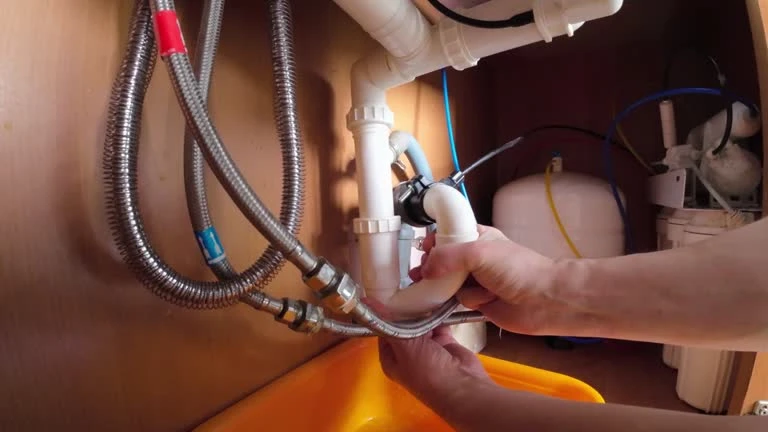Introduction to Control Valves
Control valves regulate fluid flow in hydraulic systems. They manage pressure, direction, and volume to ensure smooth operation. Without them, hydraulic machines cannot function properly. These valves respond to control signals, adjusting fluid movement as needed. Their role is crucial in industries such as manufacturing, construction, and transportation. Proper selection and maintenance enhance efficiency and longevity. Control valves also contribute to system stability, preventing abrupt pressure changes that could lead to failures. Understanding their function helps operators maintain and troubleshoot hydraulic systems effectively.
Types of Control Valves
Hydraulic systems use various control valves, each serving a distinct function. Directional control valves determine the path of fluid flow. Pressure control valves regulate system pressure to prevent damage. Flow control valves adjust the rate of fluid movement. Proportional and servo valves offer precise control in advanced applications. Each type plays a key role in maintaining system stability. Choosing the right valve depends on system requirements and operating conditions. Properly matching valve types with applications enhances performance and reduces energy consumption.
Directional Control Valves
Directional control valves guide hydraulic fluid to different system parts. They have multiple ports and operate through spools or poppets. Spool valves shift positions to change flow direction. Poppet valves use balls or cones to open and close passages. These valves operate manually, electrically, or hydraulically. Solenoid-operated valves use electromagnets for precise switching. Lever-operated valves provide manual control for machinery. Proper selection ensures smooth operation and prevents unnecessary wear. Regular maintenance reduces malfunctions and extends valve lifespan. Ensuring correct installation helps avoid leakage and inefficiencies.
Pressure Control Valves
Pressure control valves protect hydraulic systems from excessive force. They include relief, reducing, and sequence valves. Relief valves release excess pressure to avoid system failure. Reducing valves lower pressure in specific sections. Sequence valves control operations in a predetermined order. Pilot-operated relief valves allow for gradual pressure adjustments. Unloading valves improve energy efficiency by diverting excess flow. These valves improve safety and efficiency by maintaining stable pressure levels. Sudden pressure spikes can damage components, making proper pressure regulation essential. Checking pressure settings regularly helps maintain system performance.
Flow Control Valves
Flow control valves regulate fluid speed within hydraulic circuits. They help maintain consistent actuator movement. Needle valves and orifice plates are common examples. Needle valves provide fine adjustments to flow rates. Orifice plates create resistance, limiting fluid movement. Throttle valves restrict flow to specific rates for precision. Pressure-compensated flow valves maintain steady output under varying loads. These valves prevent sudden pressure changes and ensure precise operation. Proper flow control enhances overall system efficiency and prevents energy waste. Inconsistent flow can cause uneven actuator movement, reducing performance.
Common Issues and Troubleshooting
Control valves may experience wear, clogging, or leakage. Contaminated fluid causes blockages, reducing efficiency. Damaged seals lead to leaks, affecting system performance. Slow or erratic movement indicates internal damage. External vibrations can loosen fittings, leading to unstable operation. Excessive heat buildup may signal improper fluid flow. Regular inspections and cleaning prevent major failures. Replacing worn-out components restores optimal functionality. Monitoring system pressure helps detect early signs of valve issues. Ensuring proper lubrication reduces friction and prevents excessive wear. Periodic testing improves reliability and prevents unexpected breakdowns.
Selecting the Right Valve
Choosing the right valve depends on flow rate, pressure rating, and material compatibility. System requirements dictate valve type and size. High-pressure applications require durable materials like stainless steel. Corrosive environments need specialized coatings for longevity. Mobile hydraulic systems may require compact, lightweight valves. Load-sensitive systems benefit from proportional control valve. Consulting system specifications ensures compatibility and efficiency. Overlooking key selection factors can result in reduced performance and increased maintenance costs. Understanding operational demands helps in making informed choices for long-term reliability.
Conclusion
Control valves play a vital role in hydraulic systems. They regulate fluid flow, pressure, and direction for smooth operation. Proper selection and maintenance extend system life. Understanding their functions helps in troubleshooting and optimizing performance. A well-maintained hydraulic system ensures safety, reliability, and efficiency across various industries. Investing in high-quality valves reduces operational risks and downtime. Regular training on valve operation improves system handling and reduces failures. Implementing a proactive maintenance plan helps maximize valve efficiency and longevity.
IFAN Products international standards
IFAN products strictly adhere to a comprehensive range of international standards, encompassing ISO 15874, EN 15874, ASTM F2389, DIN 8077/8078, GB/T 18742, NBR 15884, ISO 15494, EN ISO 15494, GB/T 19472, NBR 15494, ASTM 2846 (501), DIN 8079/8080 (502), ASTM F441/F441M SCH80 (503), DIN (504), DIN (505), GB/T 18993, AS/NZS 1477, CSA B137.6, NSF/ANSI 14, TIS 17-2532/1131-2535, BS 3505, BS 4346 (801), ASTM D1785 SCH40 (802), ASTM D1785 SCH80 (803), DIN (804), GB (805), GB (806), GB(901), DWV(902), ASTM D2665 (903), along with ASTM D2241, D2665, D2729, and F441/F441M series, ISO 1452, EN ISO 1452, DIN 8061/8062, GB/T 10002, AS/NZS 1477, JIS K6741, CSA B137.3, and other national and industry norms.
Connect
IFAN is a Chinese manufacturer of plastic pipes, fittings and valves with 30 years of experience. If you are interest in IFAN copper fittings, copper valves, plastic pipes and fittings, please contact us. IFAN offers you a variety of standard pipes to meet your specific needs. Click below to learn more about IFAN’s wide range of affordable and cost-effective valve products and piping system related products.
We will reply your email or fax within 24 hours.
You can call us at any time if there is any question on our production.
For more information,pls visit our webside https://waterpipefitting.com/
Pls Mailto: [email protected]
Whatsapp: +8615088288323














Recent Comments